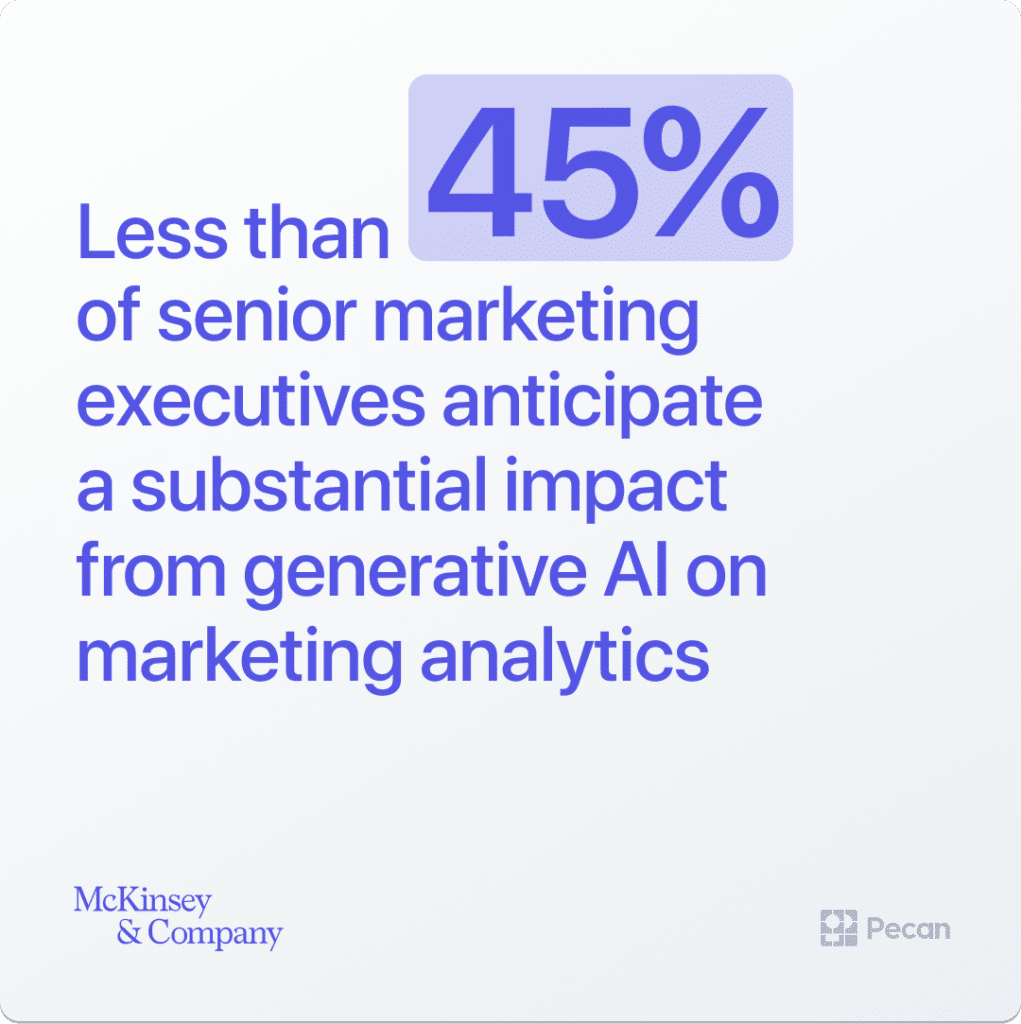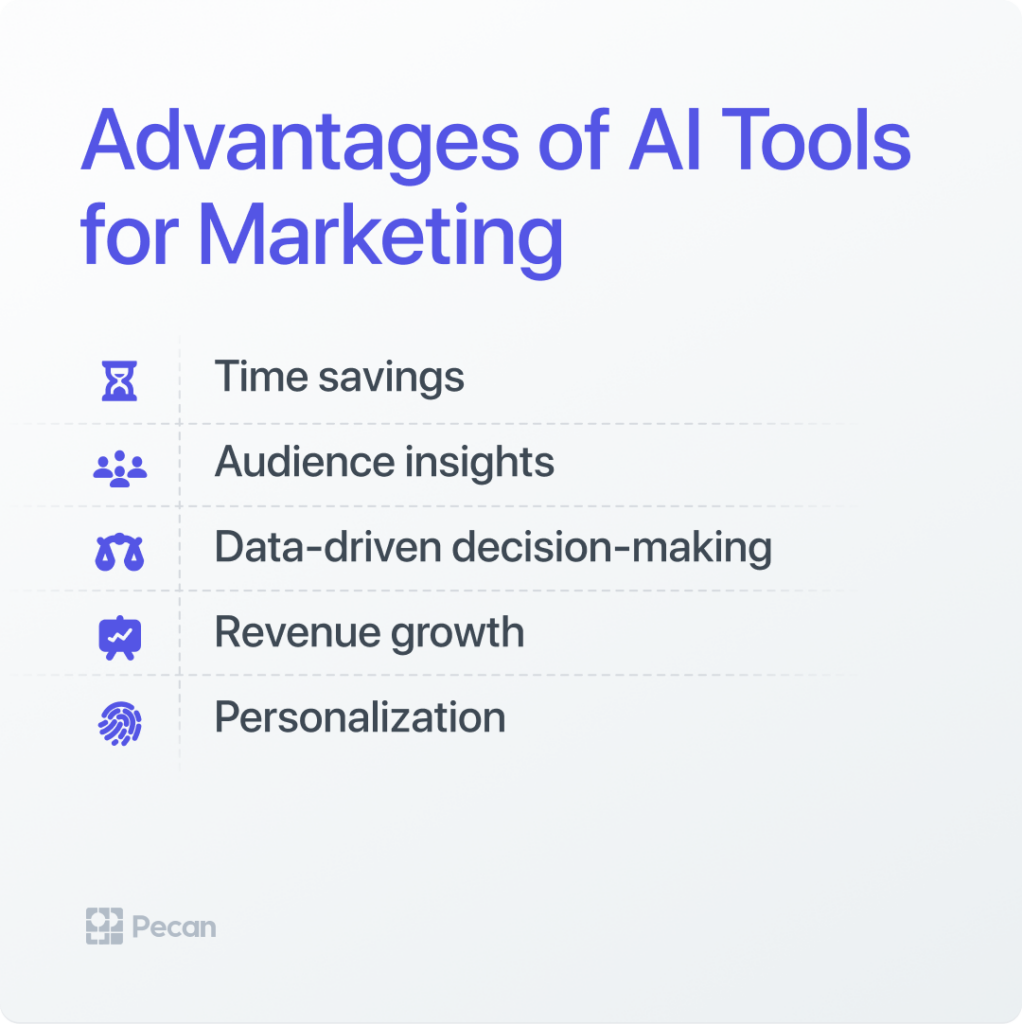Thanks to OpenAI, the creator of ChatGPT and DALL-E, the world is increasingly aware of the immense potential of artificial intelligence (AI). But AI has been around for years — and most marketers still aren’t taking full advantage of this technology.
AI is a broad classification for machines simulating human intelligence. Essentially, AI is where algorithms use huge volumes of data to recognize patterns and surface insights. Generative AI is no different. Solutions like ChatGPT are built using large language models (LLMs) and use natural language processing (NLP) algorithms to understand your “input” and “generate” outputs, whether that’s code, text, or multimedia.
https://www.youtube.com/watch?v=gCDacaohqaA
Don’t get us wrong. The ability to type in a request in your native language and get an instant result is incredible. You can conduct research faster and generate content faster, like blog outlines and some types of content. But to truly optimize your marketing campaigns at scale, you’ll need a different form of AI.
The highs and lows of generative AI for marketing
Marketers today need fast insights to inform decisions. Sifting through heaps of data isn’t a luxury they have. Speed matters and traditional data analytics methods take too much time and money. Skilled data scientists, for example, are hard to find — and costly.
In this challenging landscape, automation shines.
That makes generative AI seem like the light at the end of a dark tunnel — but generative AI has its shortcomings. LLMs like ChatGPT excel in language-related tasks. They support search, chatbots, and content creation. Yet, for digital marketers whose work hinges on identifying trends and patterns from tabular data in spreadsheets, the limitations of generative AI become apparent.
Recent research by McKinsey reveals that less than 45% of senior marketing executives anticipate a substantial impact from generative AI on marketing analytics. The disparity arises because generative AI can’t ingest raw data. Nor can it perform data preprocessing or build predictive models. Although ChatGPT and data scientists can form an effective partnership in generating code for these tasks, that workflow requires someone with advanced expertise to manually guide and execute the entire predictive modeling process. And if you’re a marketer without a friendly neighborhood data scientist on call, you’ll need a repeatable way to find those insights yourself — without any code.
Consider other marketing use cases as well. While you can use generative AI to quickly write personalized emails to customers or automate chatbot interactions, you still need to know which customers are at high risk of churn or which customers might be receptive to an upsell offer.
The same goes for dynamic audience targeting, customer-journey mapping, and so on. All of that requires predictive modeling.
The time-tested need for predictive modeling
Most businesses deal with transactional and customer data stored in spreadsheets, CRMs, data warehouses, and other forms of tabular data. Predictive modeling is a must-have asset for digital marketers, especially those working with tabular data in spreadsheets.
Predictive modeling uses AI to automatically build models that predict future outcomes based on raw data. These models are trained to identify patterns and trends likely to recur.
Imagine you’re a marketer tasked with preventing churn. With predictive analytics, you gain the ability to accurately identify customers at higher risk of churning and determine when and how to implement interventions.
The proactive approach extends to other scenarios as well. Predictive modeling can elevate upsell and cross-sell success rates by identifying offers for the right customer at the right time, vastly improving conversion rates and generating greater revenue.
Beyond the immediate benefits of customer retention and increased sales, predictive modeling holds the key to measuring long-term marketing performance. Marketers can ensure that their campaigns hit the mark every time by making accurate predictions and optimizing strategies based on insights.
Uniting generative and predictive AI for maximum impact
No marketing team has to choose between generative AI and predictive analytics. It’s not an “either/or” scenario. Rather, it’s about knowing when to use each AI approach and how their unique strengths can work together to make better data-based decisions.
Predictive analytics acts like a crystal ball for understanding consumer behavior. It gives marketers data-backed predictions, like knowing how much a customer might be worth over their lifetime or estimating potential returns on ad spend (ROAS) within a day after launching a campaign.
These insights and predictions won’t write blog posts or directly interact with customers, but they will shape your strategies for better customer engagement and campaign effectiveness.
Conversely, generative AI can partially or fully automate many time-consuming tasks. It’s the AI tool that instantly generates content, including drafting blogs and assisting customers online.
The savviest marketing teams don’t limit themselves to just one tool. They recognize that predictive analytics offers foresight and turns raw data into actionable insights. At the same time, generative AI sparks ideas and automates tasks within the marketing team, boosting productivity. What’s clear is that marketing teams embracing AI will outperform those stuck in historical data and tedious manual processes.
Embracing the full potential of AI in marketing
In digital marketing, AI’s potential extends beyond generative AI like ChatGPT. While generative AI helps quickly produce content or perform tasks, predictive modeling gives marketers insights into specific actions to improve performance and revenue. The latter guides the former.
Consider this grocery delivery app’s success in accurately forecasting sales volume at the SKU level — without engaging internal data scientists — using predictive modeling. The result? An estimated 10x faster time to market and 80-90% accuracy for forecasting top revenue categories.
This powerful combination of tools allows marketers to create engaging content, anticipate customer behavior, and tailor their strategies for the best results. In a landscape where every data point matters, predictive modeling becomes the missing piece of the AI puzzle that unlocks marketing’s full potential.
Keep on reading! Learn how CMOs can switch from reactive to proactive with The CMO’s Guide to Predictive Analytics.






















